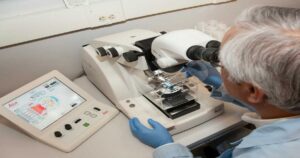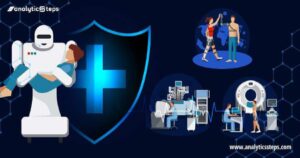EMRs have transformed how healthcare organizations handle patient data, improving efficiency and reducing errors. Hospitals can utilize them to enhance patient care and optimize management processes.
1. Understanding Hospital EMR Systems
Electronic medical records (EMR) systems in hospitals, as digital adaptations of traditional paper charts, have become an integral part of modern healthcare. They encompass vital patient information, such as diagnoses, medical histories, lab results, medications, and physicians’ notes. These systems enhance workflow efficiency by streamlining clinical processes, reducing manual tasks, and facilitating quick access to patient data. By eliminating paperwork and manual searching, EMR hospital software saves valuable time and allows healthcare providers to focus more on patient care. With improved access to comprehensive and accurate information, EMR systems contribute to enhanced patient care, treatment planning, and coordination among healthcare teams, ultimately leading to better outcomes for patients and healthcare institutions.
1.1 EHRs vs. EMRs
Electronic medical records (EMRs) and electronic health records (EHRs) are two electronic systems used in modern healthcare to manage patients’ medical information. While both aim to improve the quality of healthcare and patient safety, EMRs stand out for their ability to enhance workflow efficiency, improve patient care and safety, and offer better control over data security and privacy. Compared to EHRs, EMRs are more straightforward to use, less expensive, and do not require as much implementation complexity. Choosing between EMRs and EHRs ultimately depends on the specific functions that best serve the needs of the medical facility. Medical practitioners can find EMRs to be a compelling option due to their affordability and simplicity, as well as their ability to manage medical records securely and effectively.
2. Role of EMR in Improving Hospital Management System
The Hospital Management System (HMS) covers three vital areas of hospital management, namely – Operations, Finance, and Clinical. The clinical aspect of the system includes EMR, which provides medical practitioners with a range of advantages, such as
• EMRs facilitate quick transfer of patient information between different departments.
• The digital record-keeping environment helps save a significant amount of space.
• EMRs can help practitioners increase the number of patients they can see, leading to improved productivity and workflow.
• Reduced errors in medical practice can result in better patient care and management of test results.
• EMRs can reduce operational costs, especially in relation to overtime labor and transcription services.
• EMRs can be customized and scaled to meet the specific needs of medical practice.
• EMRs allow for advanced clinical documentation and e-prescribing.
• EMRs enable more efficient and accurate billing processes for healthcare practices.
In terms of benefits to patients, EMRs can improve the treatment and diagnosis of diseases,facilitate rapid decision-making and coordinate care among medical professionals assigned to individual patients,with a reduced likelihood of significant errors in a patient’s health record.
3. Resolving Challenges in EMR Implementation
EMR integration is vital as more healthcare organizations adopt hospital electronic medical records. However, the process can be time-consuming and challenging. Here, we will discuss the top six challenges of integrating EMRs as well as ways to overcome them
- Standardizing Data FormatsData compatibility is one of the primary challenges in integrating EMRs. The diverse formats in which various EMR systems store data can pose a significant hindrance to integration efforts. Addressing this obstacle requires identifying a viable approach for converting the data into a standardized format that is compatible with both systems.
- Coding IncompatibilityDealing with varying coding standards is another significant challenge that arises during EMR integration. The utilization of distinct coding standards across different EMR systems can pose a considerable challenge to the integration process. To overcome this hurdle, one must devise a solution to map the codes from one system to the codes in the other system.
- Data SecurityEMR integration raises significant security concerns that require attention. Securing the data and restricting access to only authorized users are critical aspects that necessitate appropriate security protocols. To ensure data safety and confidentiality, it is imperative to establish sound security measures.
- Maintaining Data QualityIntegrating EMR systems carries a risk of data loss or corruption, making it crucial to prioritize data quality. To address this challenge, it is imperative to establish effective measures that ensure the accuracy and reliability of the data.
- Ensuring Optimal FunctionalityFollowing the integration of EMR systems, it is crucial to conduct rigorous testing and validation to ensure that the systems are functioning optimally. Despite the potential costs and time investments involved, it is necessary to prioritize this step to avoid complications and setbacks in the future.
- Cost ManagementIntegrating EMR systems can be a significant financial undertaking, necessitating careful planning and budgeting. It is essential to factor in the costs of licenses, hardware, software, and services when embarking on an integration project. To address this challenge, one can explore cost-saving measures such as negotiating with vendors or implementing open-source software.
4. Revolutionizing HMS with Next-Gen EMR Innovations
In the coming years, emerging trends in EMR are expected to have a significant impact on the hospital management system. It is crucial for hospital EMR management to keep a close eye on these developments and stay informed of the latest technological advancements to provide optimal care to their patients. Adapting to the evolving landscape and staying current with these changes will be essential for hospital management systems to continue providing high-quality care and remain competitive in the healthcare industry.
- Cloud ComputingIt refers to the instant digitization of medical records and easy access to them. It is a significant trend in the development of electronic medical records (EMR). However, there are challenges in transferring data between databases. It proves to be a boon when medical staff is scarce as it allows easy access to patient records. Moreover, Cloud Computing in EMR technology can provide healthcare providers with quick access to patient data, which can enable them to provide timely and appropriate care.
- RPARobotic Process Automation (RPA) refers to the computerization and digitization of data. In the healthcare industry, RPA can alleviate the burden of manual labor and provide more precise and reliable data. Sophisticated software and techniques are utilized to derive this data, addressing the problem of inefficiency in EMR without necessitating a complete overhaul of the system. RPA is also a time-saving process that enables medical staff to allocate their time more effectively to crucial tasks. Additionally, RPA can reduce the need for manual labor, resulting in cost savings.
- Revamping EMR with IoT, AI & Voice RecognitionThe integration of IoT, artificial intelligence, and voice recognition in healthcare has significantly aided in the development of EMR. This combination has the potential to transform the healthcare industry by providing precise and swift data, which could prove critical in saving numerous lives. By combining these three technologies, more accurate data can be obtained, further enhancing patient care.
- Big Data and 6G Networking for Healthcare AnalysisBig data analysis helps generate medical records by collecting and analyzing data from multiple sources. This approach provides precise insights that benefit both patients and medical professionals. The sixth-generation network, currently in development, has the potential to transform healthcare. By improving the speed of data transfer and communication between remote locations, this new network will facilitate the digitization of medical records and lead to the development of improved EHR and EMR systems.
- Wearable Devices for Better Patient MonitoringVarious wearables with sensors can monitor patients’ daily activities and later be integrated with EMRs for better healthcare. The wearables track patients’ medical activities and vitals like heart rate and temperature. Integrating these wearables with EMRs provides timely information to healthcare centers, leading to improved care and treatment.
5. Key Takeaways
EMRs have the potential to revolutionize the healthcare industry by enhancing patient care quality, productivity, and outcomes. However, implementing EMRs entails significant changes that require strong leadership support, dedicated physician champions, efficient training and optimization, and flexibility from the implementation team. Targeted training and support for specific components of the EMR system, such as patient portals and documentation tools, can help users adopt the system more efficiently and reduce the impact on productivity. By following a well-planned implementation strategy, healthcare organizations can harness the benefits of EMRs while minimizing disruption to their operations. Overall, EMRs offer solutions that create a secure and efficient platform for healthcare facilities and patients, helping to promote better connectivity and healthier lifestyles. The demand for EMR systems is pressing and vital in the current scenario, as the developments in the EMR industry indicate that they will play a critical role in revolutionizing the medical sector.



